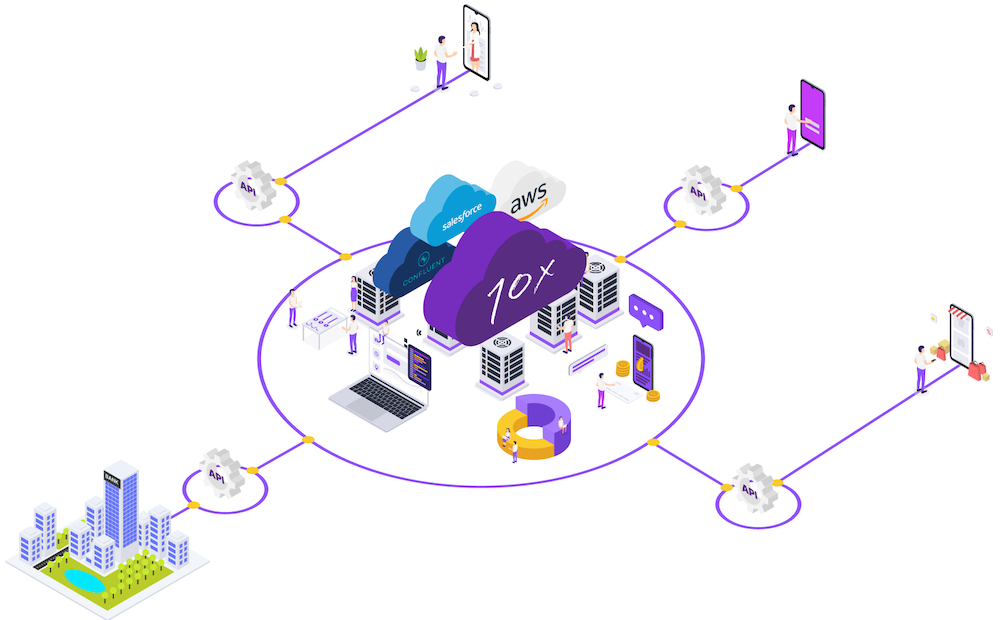The rise of super-apps in Asia has transformed how consumers access and engage with financial services. From Singapore-based Grab to Indonesia's Gojek, people can easily access a range of products inside one app. This includes traditional banking services embedded into user journeys, so people can access them without interacting with a bank or visiting a branch.
Given the deep penetration of super-apps, banks in the region may wonder if they have already missed the boat. Fear not; banks still have many opportunities to surface products in smart places to reach new audiences. But first and most importantly, banks must figure out if (and how) embedded finance will work for them.
What is embedded finance?
Embedded finance enables companies to integrate financial products into their apps, platforms, and websites, making it faster and easier to complete payments and access other financial services, such as point-of-sale financing, quick loans, and insurance.
"Every time you make a financial transaction within a secure app without having to re-authenticate yourself, that's embedded finance," says Leda Glyptis, Chief Client Officer at 10x. Ride-hailing apps are a classic example – you book a cab through an app, and your payment is made automatically in the background. The ease appeals to consumers, who can arrive at their destination without visiting an ATM or typing in their card details.
"Rather than dealing with multiple parties, banks are dealing with one connection into a distributor for financial services products, lowering the cost to serve," says Richard Lim, Regional Sales Director in 10x's Sydney office. "It's much more seamless and frictionless, so it's a win-win for everyone."
Stress testing the embedded finance opportunity for your bank
For embedded finance to work, it must make sense for all parties – the consumer, bank, and retailer. Customers expect relevant experiences that are nice and easy – a few clicks, at the point of need, instead of queuing at the bank to sign paperwork.
If a customer is buying airline tickets online, Richard explains, travel insurance could be embedded into the journey. The customer gets a relevant offer, the bank sells its services, and the airline gets incentivized for every transaction. All parties must benefit equally, or it doesn't make sense.
Banks must keep this in mind, explains Leda: they must clearly articulate the problem they solve to create a competitive embedded finance proposition.
"The use cases we've seen so far are largely embedded payments and lending – like Uber and Klarna – and I think we're going to start seeing more embedded insurance and FX."
"None of this is new – we didn't call it embedded finance when we used Uber for the first time. But thanks to an API-first environment, regulatory maturity, and a better understanding of banking as a service, we're starting to talk about it differently."
What do banks need to compete?
Banks need a modern, cloud-native core or a platform that enables banking as a service to make embedded finance happen. For the majority, existing tech stacks may not cut it. But instead of embarking on a multi-year program to build a shiny new tech stack, by which time the market will have evolved, banks need a digital, cloud-native platform they can stand up quickly: Something that they can treat like a utility service, turning it on with relative ease, with little to no management overhead, to test out this new revenue stream.
We've seen clients build banking as a service platforms, running on a 10x cloud-native core, that have been provisioned alongside the bank's existing technology estate – enabling them to launch within 18 months.
"With 10x's model, banks don't need to commit significant engineering resources to do it," says Richard. "It's a low-cost, low-risk option without taking on operational risk or disrupting the existing core—and that allows banks to open up new customer segments and revenue streams at speed."
How Gojek is boosting financial inclusion in Indonesia through embedded finance
Gojek is one of Southeast Asia's largest multi-service platforms, covering everything from ride-hailing and food delivery to payments and insurance. Before acquiring a stake in Indonesia's Bank Jago, Gojek would give people without a bank account access to a digital wallet. Users could top up by calling a Gojek rider who would come to their house and collect the cash.
"Whether it's by design or by chance," says Richard. "These fintechs have solved many of the common challenges and issues that apply to the unbanked and underbanked, looking for a low-cost alternative to traditional financial services. These super-apps have come in and filled the gap," says Lim.
How exactly do these fintechs offer so many services at such low costs? It all comes down to an absence of legacy IT. "If you're managing a legacy stack that requires 1,000 engineers to run and it's on localized hardware requiring redundant capacity, all that adds to cost and time to revenue," says Richard. "A lot of these fintechs are digitally native and cloud-based. Their tech, which can scale efficiently, comes at a much lower price point, so they can pass those savings onto consumers."
Banks must be able to price their embedded services in line with the rest of the market, but their existing tech stacks weren't built with this requirement in mind.
Making the call
While there's a lot of talk about the potential of embedded finance, the industry is still far from mature, which presents significant opportunities to support greater financial inclusion, better user experiences, and a more robust digital economy.
"For me, it's a business decision, not a technology one," says Leda. "Focus on the business case first. And then partner for the tech."
Get in touch today to see how we can help you get to market quickly and cost-effectively.



